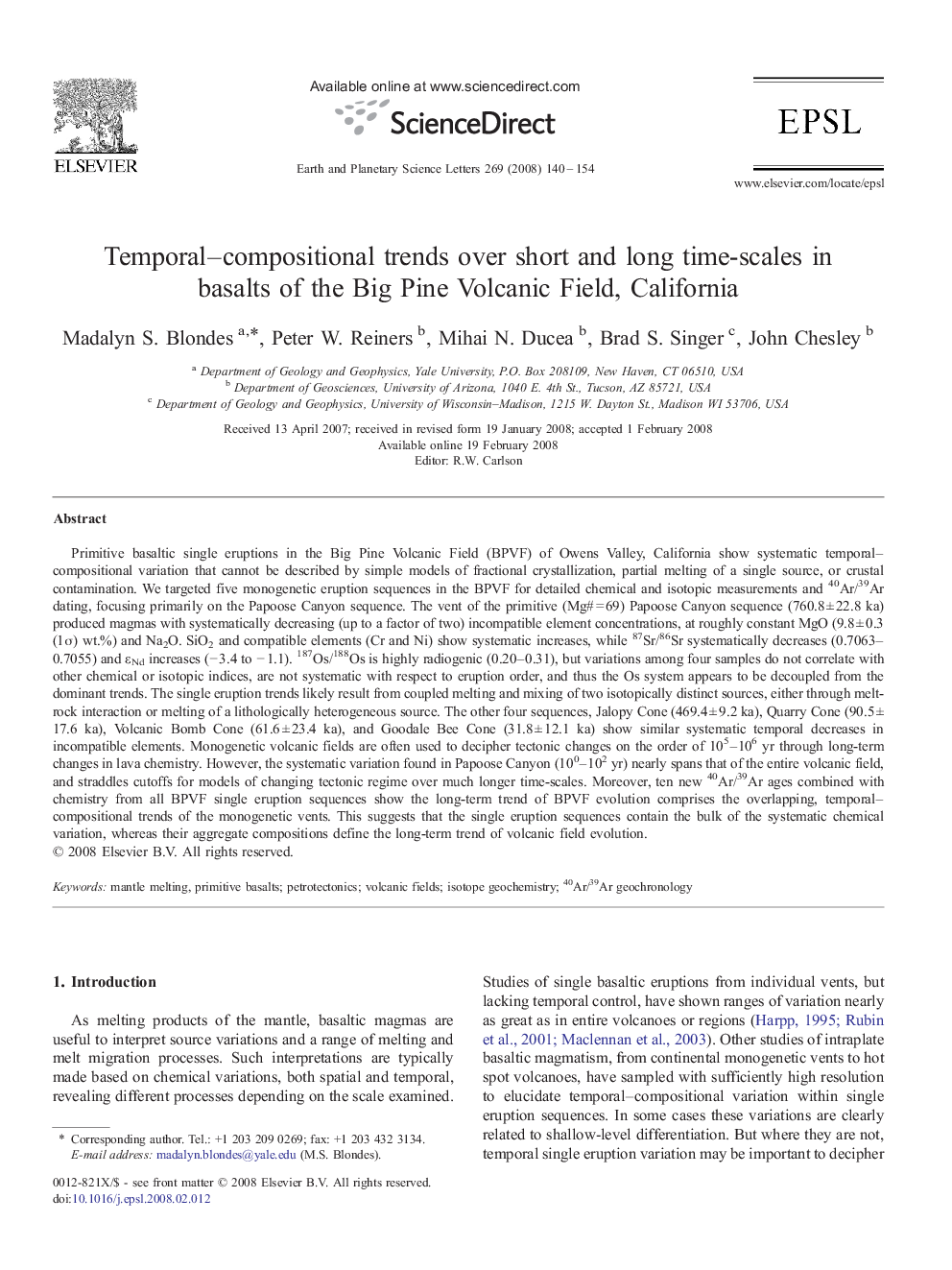| کد مقاله | کد نشریه | سال انتشار | مقاله انگلیسی | نسخه تمام متن |
|---|---|---|---|---|
| 4679928 | 1634897 | 2008 | 15 صفحه PDF | دانلود رایگان |

Primitive basaltic single eruptions in the Big Pine Volcanic Field (BPVF) of Owens Valley, California show systematic temporal–compositional variation that cannot be described by simple models of fractional crystallization, partial melting of a single source, or crustal contamination. We targeted five monogenetic eruption sequences in the BPVF for detailed chemical and isotopic measurements and 40Ar/39Ar dating, focusing primarily on the Papoose Canyon sequence. The vent of the primitive (Mg# = 69) Papoose Canyon sequence (760.8 ± 22.8 ka) produced magmas with systematically decreasing (up to a factor of two) incompatible element concentrations, at roughly constant MgO (9.8 ± 0.3 (1σ) wt.%) and Na2O. SiO2 and compatible elements (Cr and Ni) show systematic increases, while 87Sr/86Sr systematically decreases (0.7063–0.7055) and εNd increases (− 3.4 to − 1.1). 187Os/188Os is highly radiogenic (0.20–0.31), but variations among four samples do not correlate with other chemical or isotopic indices, are not systematic with respect to eruption order, and thus the Os system appears to be decoupled from the dominant trends. The single eruption trends likely result from coupled melting and mixing of two isotopically distinct sources, either through melt-rock interaction or melting of a lithologically heterogeneous source. The other four sequences, Jalopy Cone (469.4 ± 9.2 ka), Quarry Cone (90.5 ±17.6 ka), Volcanic Bomb Cone (61.6 ± 23.4 ka), and Goodale Bee Cone (31.8 ± 12.1 ka) show similar systematic temporal decreases in incompatible elements. Monogenetic volcanic fields are often used to decipher tectonic changes on the order of 105–106 yr through long-term changes in lava chemistry. However, the systematic variation found in Papoose Canyon (100–102 yr) nearly spans that of the entire volcanic field, and straddles cutoffs for models of changing tectonic regime over much longer time-scales. Moreover, ten new 40Ar/39Ar ages combined with chemistry from all BPVF single eruption sequences show the long-term trend of BPVF evolution comprises the overlapping, temporal–compositional trends of the monogenetic vents. This suggests that the single eruption sequences contain the bulk of the systematic chemical variation, whereas their aggregate compositions define the long-term trend of volcanic field evolution.
Journal: Earth and Planetary Science Letters - Volume 269, Issues 1–2, 15 May 2008, Pages 140–154